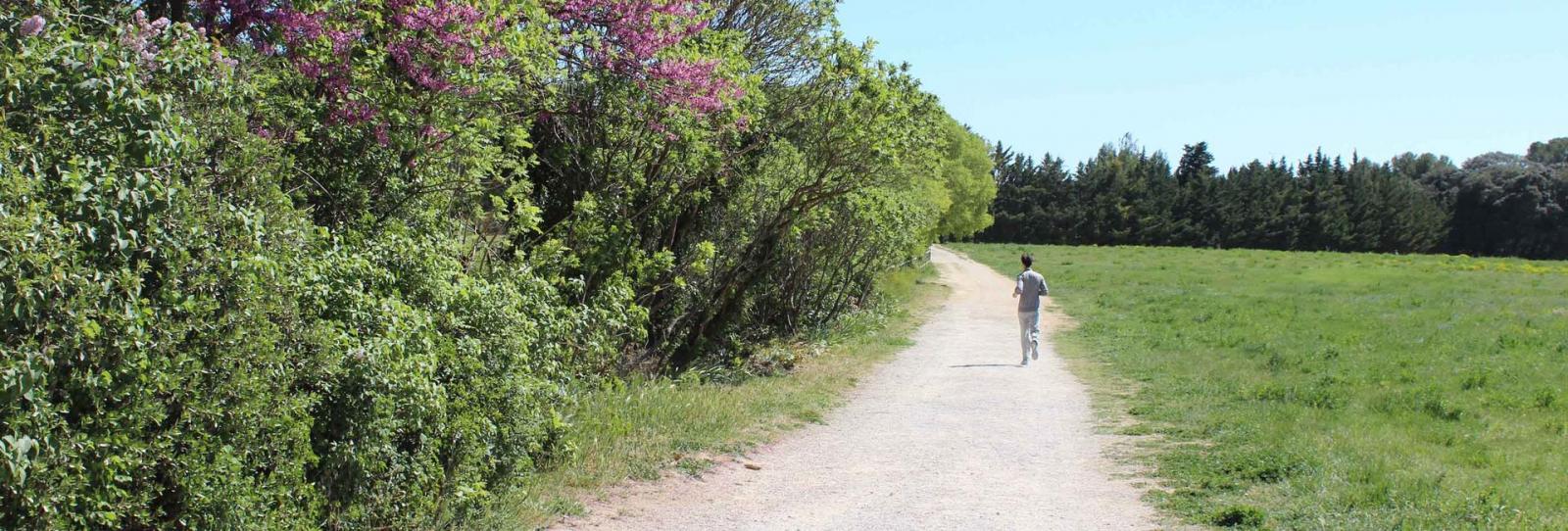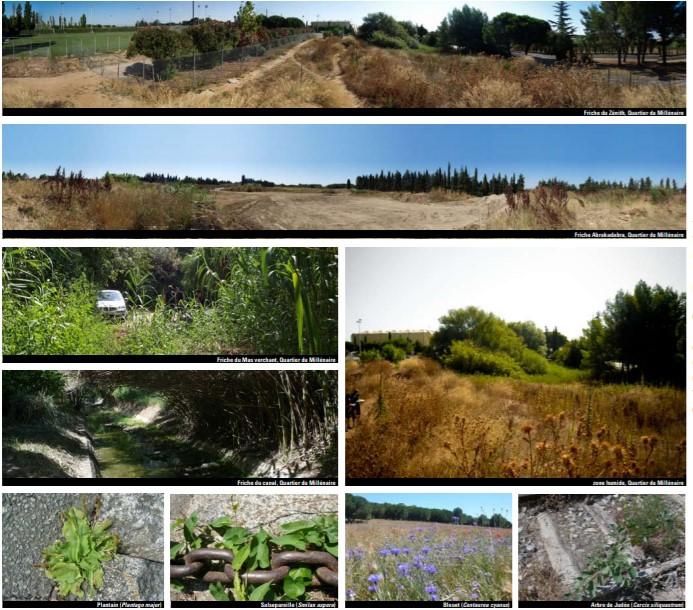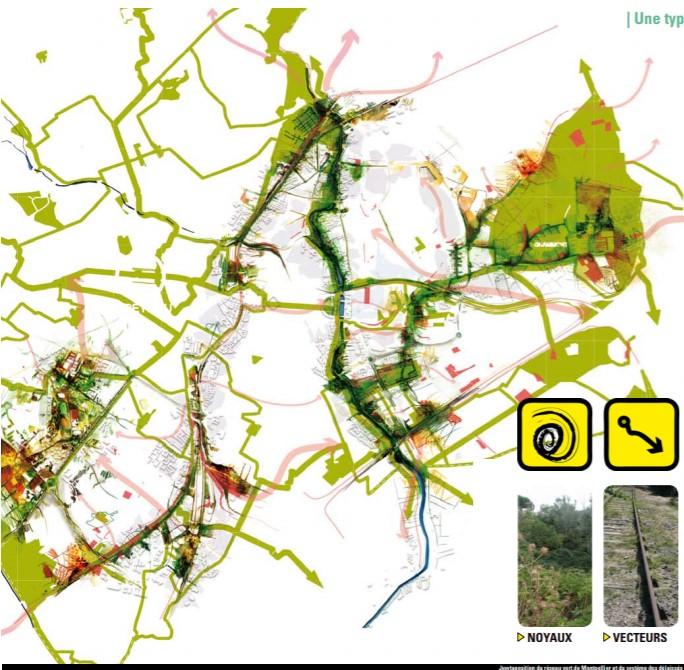In 2009, the city of Montpellier launched a large census project to valorize its abandoned areas. The study gives guidance on the management of abandoned areas in Montpellier, particularly in connection with environmental education and awareness objectives (Ref. 2). The strategy aims to preserve and promote the natural heritage of Montpellier; promote wastelands as reservoirs of biodiversity, tools for connecting natural spaces; protect and enhance the great green flows accompanying watercourses (biological links and privileged sites for fauna and flora); and develop a network of soft transport throughout the city based on the green network (rivers, agricultural, natural and park areas) (Ref. 4). "The spaces have been classified according to their context, their origin, their potential. This sometimes subjective typology presents a classification of the wasteland and makes it possible to take a particular look on each land. Surfaces of all shapes and sizes fall within this operational classification." Four Experimental projects include: Zenith Friche, Promenade of the Lironde, Pastourelle, Combemale" (Source: uploaded document).
Overview
Nature-based solution
- Parks and urban forests
- Large urban parks or forests
- Green corridors and green belts
- Community gardens and allotments
- Horticulture
- Blue infrastructure
- Rivers/streams/canals/estuaries
- Intentionally unmanaged areas
- Abandoned spaces with growth of wilderness or greens
Key challenges
- Climate action for adaptation, resilience and mitigation (SDG 13)
- Climate change adaptation
- Climate change mitigation
- Water management (SDG 6)
- Flood protection
- Stormwater and rainfall management and storage
- Green space, habitats and biodiversity (SDG 15)
- Habitat and biodiversity conservation
- Environmental quality
- Air quality improvement
- Noise reduction
- Regeneration, land-use and urban development
- Conversion of former industrial areas
- Promote natural styles of landscape design for urban development
- Social justice, cohesion and equity (SDG 10)
- Environmental education
- Environmental and climate justice
- Health and well-being (SDG 3)
- Creation of opportunities for recreation
- Cultural heritage and cultural diversity
- Preservation of natural heritage
Focus
Project objectives
Implementation activities
Climate-focused activities
Climate change adaptation:
- Renaturalization of rivers and other water bodies
Climate change mitigation:
- Increase green urban nature for carbon storage (wetlands, tree cover)
- Improve carbon sequestration through selection of more adaptable species
Biodiversity conservation or restoration-focused activities
Biodiversity conservation:
- Protect and enhance urban habitats
- Preserve and strengthen existing habitats and ecosystems
- Preserve and strengthen habitat connectivity
- Protect species
- Undertake specific measures to protect species
- Undertake specific measures to protect valued species
- Means for conservation governance
- Raise public awareness
- Public engagement
- Capacity building
Main beneficiaries
- Local government/Municipality
- Public sector institution (e.g. school or hospital)
- Non-government organisation/Civil Society
- Citizens or community groups
- Young people and children
- Other
Governance
Management set-up
- Government-led
Type of initiating organisation
- Local government/municipality
Participatory approaches/ community involvement
- Dissemination of information and education
- Consultation (e.g. workshop, surveys, community meetings, town halls)
- Citizen monitoring and review
Details on the roles of the organisations involved in the project
Project implemented in response to ...
Financing
Total cost
Source(s) of funding
- Public local authority budget
Type of funding
- Earmarked public budget
Non-financial contribution
Impacts and Monitoring
Environmental impacts
- Climate change
- Enhanced carbon sequestration
- Environmental quality
- Improved air quality
- Reduced noise exposure
- Water management and blue areas
- Increased protection against flooding
- Improved stormwater management
- Green space and habitat
- Increased number of protection areas
- Increased conservation or restoration of ecosystems
- Reduced biodiversity loss
- Enhanced support of pollination
- Increased spread of native/heirloom/open-pollinated seed
- Restoration of derelict areas
Economic impacts
- Unknown
Socio-cultural impacts
- Education
- Increased knowledge of locals about local nature
- Increased awareness of NBS and their benefits
Type of reported impacts
Presence of formal monitoring system
Presence of indicators used in reporting
Presence of monitoring/ evaluation reports
Availability of a web-based monitoring tool
References
2. Source link (n.d). "Biodiversité". Section "Fauche tardive pour préserver la biodiversité". Available at: Source link (Accessed: August 4, 2020).
3. Coloco (n.d). "Montpellier – Les délaissés en réseau". Source link (Website not available in 2020).
4. Capitales françaises de la biodiversité (n.d). "SCHÉMA DE RÉSEAU VERT ET STRATÉGIE DE GESTION DES FRICHES ET DÉLAISSÉS URBAINS". Available at: Source link (Accessed: August 4, 2020).




